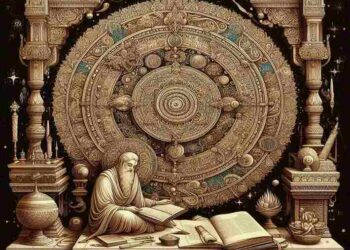Table of Contents
ToggleIntroduction
Understanding Character Development In Literature Character development is one of the most important factors that affect a literary work’s success. Character development—or lack thereof—often propels the plot and sheds light on the text’s more general themes, whether you’re reading an epic fantasy, contemporary thriller, or classic literature.
The way characters change during a novel is known as character development, and it is essential to holding readers’ attention and providing a meaningful experience.
Unlocking a literary work’s deeper layers requires an understanding of character development. Characters’ reactions to events are only one aspect of it; another is how they contradict, represent, or mirror the main ideas and themes of the story. The idea of character development will be covered in detail in this article, along with the methods writers employ to mold their characters and the literary value of these changes.
1. The Role of Character Development in Literature
Character development is often seen as the backbone of a compelling narrative. Without well-developed characters, a story can feel flat, unrelatable, or emotionally detached. Characters are the vehicle through which themes are conveyed, and they are often the ones that readers connect with the most. Their actions, struggles, and growth define the narrative and its impact.
Read More
Why is Character Development Important?
- Engagement and Emotional Connection: Well-developed characters allow readers to connect emotionally with the story. This emotional investment is what often keeps readers turning the pages, eager to see how the characters’ journeys unfold.
- Driving the Plot: Characters’ decisions, motivations, and actions propel the plot forward. The way they evolve in response to the conflicts they face directly affects how the narrative develops.
- Conveying Themes and Ideas: Characters embody the central themes of the work. Their growth or decline often symbolizes the author’s commentary on broader social, political, or philosophical issues.

2. Types of Character Development
Not all characters undergo the same level or type of development. Writers use various methods to shape their characters’ arcs, and each type of development serves a different narrative purpose.
a. Dynamic vs. Static Characters
- Dynamic Characters: A dynamic character undergoes significant internal change throughout the story. These changes are often the result of the character’s struggles, experiences, or conflicts. Dynamic characters reflect the theme of growth, transformation, or redemption.
- Example: In Pride and Prejudice, Elizabeth Bennet is a dynamic character who evolves from being prejudiced against Mr. Darcy to understanding and loving him. This shift reflects the theme of personal growth and the importance of overcoming one’s biases.
- Static Characters: A static character remains largely unchanged throughout the story. While they may play pivotal roles in the narrative, they don’t experience the internal transformation that dynamic characters do. Static characters can be used to emphasize the impact of the environment or other characters on the narrative.
- Example: In The Great Gatsby, Daisy Buchanan remains relatively unchanged despite the significant events around her, symbolizing the theme of corruption and the inability to escape the past.
b. Round vs. Flat Characters
- Round Characters: These are complex, multi-dimensional characters with depth. They display a range of emotions, motivations, and traits, which makes them feel real and relatable. Round characters are capable of change and growth, and they often face significant internal conflicts.
- Example: Hamlet, from Shakespeare’s Hamlet, is a classic round character. His internal conflict, moral dilemmas, and philosophical struggles make him a deeply complex and multi-faceted character.
- Flat Characters: Flat characters are typically one-dimensional and do not undergo significant change throughout the story. They often embody a single trait or serve a particular function in the plot. Though they are not as deeply developed as round characters, flat characters can still be vital to the story’s progression.
- Example: In The Hunger Games, the character of Prim is a flat character. She serves as a symbol of innocence and the motivation for Katniss’ actions, but her character does not experience the kind of deep development seen in Katniss.
3. Stages of Character Development
Character development doesn’t happen all at once. It unfolds in stages throughout the narrative, often with the character facing obstacles or crises that push them toward growth or change.
a. The Initial State of the Character At the start of the story, the character is often in a state of stagnation or conflict. Their initial state is essential for setting the stage for their development. This is where the reader first encounters the character and starts to understand their background, motivations, and challenges.
- Example: In To Kill a Mockingbird, Scout Finch begins as a curious and somewhat naïve young girl. Her views of the world are shaped largely by her family, but as the story progresses, her understanding of morality and justice is deeply tested.
b. The Crisis or Conflict As the plot unfolds, the character often faces a crisis or a conflict that challenges their beliefs, values, or goals. This is a pivotal moment for their development, as it forces them to confront something within themselves or in the external world that requires them to evolve.
- Example: In The Catcher in the Rye, Holden Caulfield experiences a series of internal and external crises that challenge his cynical worldview. His deep feelings of alienation and disillusionment drive his narrative arc.
c. The Transformation In this stage, the character undergoes significant internal change. Their struggles and the events they encounter force them to reconsider their previous assumptions, leading to growth or, in some cases, regression. This transformation is often the culmination of the narrative, as it reflects the core theme of the story.
- Example: In A Christmas Carol, Ebenezer Scrooge undergoes a profound transformation from a miserly, selfish man to one who is generous and caring. This change reflects themes of redemption and the power of personal growth.
d. The Resolution The resolution is where the character’s transformation comes full circle. How the character ends the story is often a reflection of their development. Whether they have learned a lesson, found peace, or are left with lingering questions, the resolution serves as the final chapter of their growth.
- Example: In The Lord of the Rings, Frodo’s journey represents both physical and emotional growth. By the end of the story, he has experienced immense loss, but his resilience is evident as he passes the torch to others who will continue the fight for good.
4. Techniques Used in Character Development
Authors use a variety of techniques to develop their characters. These techniques help shape how characters evolve and interact with the world around them.
a. Dialogue Dialogue is a powerful tool in revealing a character’s personality, motivations, and growth. Through what characters say—and how they say it—authors can communicate a great deal about their psychological state and development.
- Example: In The Great Gatsby, Gatsby’s dialogue reveals much about his obsessive love for Daisy and his desire to reinvent himself, which are central to his character development.
b. Actions and Decisions The choices a character makes in the narrative reflect their internal state and contribute to their development. Sometimes, characters make mistakes or face moral dilemmas, and these decisions drive the narrative forward while showing how the character is changing.
- Example: In The Crucible, John Proctor’s decisions in the face of the Salem witch trials lead to his moral and spiritual development, culminating in his choice to die rather than live with the shame of a false confession.
c. Internal Monologues and Narration Some works feature characters who articulate their inner thoughts through monologues or first-person narration. This technique gives readers access to the character’s private struggles, allowing them to witness their emotional and intellectual growth in real-time.
- Example: In Crime and Punishment, Raskolnikov’s internal monologues give readers insight into his tortured mind as he grapples with guilt, justification, and redemption.
d. Relationships with Other Characters A character’s interactions with others play a significant role in their development. The dynamics between characters can provoke change, spark conflict, or provide the emotional support necessary for growth.
- Example: In The Kite Runner, the relationship between Amir and Hassan is central to the novel’s theme of redemption. Amir’s eventual realization of his wrongs toward Hassan leads to his own emotional growth.
5. Character Development and Literary Themes
Character development often intersects with broader themes in literature. The personal journeys of the characters reflect or critique these themes, contributing to the deeper meaning of the work.
- Identity and Self-Discovery: Characters often go through a process of self-realization, struggling with their sense of identity. This theme is especially prominent in coming-of-age stories like The Catcher in the Rye.
Read More
- The History Of Storytelling In Aboriginal Literature
- Morality and Ethical Choices: Characters frequently face moral dilemmas, and their choices reveal their evolving sense of right and wrong. This is evident in works like The Brothers Karamazov, where characters wrestle with questions of faith and morality.
- Social and Political Critiques: Characters can embody or challenge societal norms and injustices. In 1984, Winston Smith’s development highlights the dangers of totalitarianism and the loss of individual freedom.
6. Why Character Development Matters
Character development is not just about following a character’s journey; it is an essential tool for making the story resonate with the reader. Characters that evolve in a compelling way provide the emotional and intellectual core of a narrative. They act as mirrors for the reader’s own experiences and can challenge, validate, or question the reader’s beliefs.

Conclusion
Character development is an essential component of storytelling, driving both the plot and themes of a work. Whether through dynamic growth, moral dilemmas, or deep psychological conflict, the way characters evolve influences how a narrative resonates with readers. Understanding the techniques authors use to develop their characters—through dialogue, actions, internal monologues, and relationships—allows readers to uncover the deeper meanings within a story.
Read More
Q1: How do I recognize a character’s development in a story?
A1: Look for moments where the character faces challenges or dilemmas that force them to change their beliefs or behaviors. Pay attention to their internal struggles, decisions, and how their actions reflect these changes.
Q2: How do static characters contribute to a story?
A2: Static characters can act as foils to dynamic characters, highlighting the changes and growth of the protagonist. They can also emphasize the themes of the narrative, such as the inability to escape societal roles or the persistence of certain human traits.
Q3: Do all characters need to undergo significant development?
A3: Not all characters need to undergo drastic development. Some stories, especially those with symbolic or allegorical characters, may focus more on the environment or events rather than the characters’ internal transformations.
Q4: How can I analyze character development in a novel?
A4: Focus on key moments in the narrative where characters make significant decisions or undergo emotional changes. Examine their relationships with other characters, their internal monologues (if available), and the ways in which they reflect or challenge the themes of the story.
Q5: Can character development occur without a clear resolution?
A5: Yes, some characters’ development can be left open-ended or unresolved, reflecting the complexities of life. For instance, in The Stranger by Albert Camus, the protagonist’s lack of resolution and acceptance of the absurdity of life speaks to the novel’s existential themes.
















